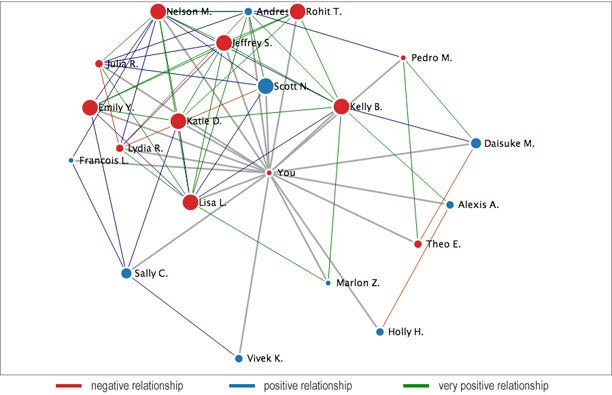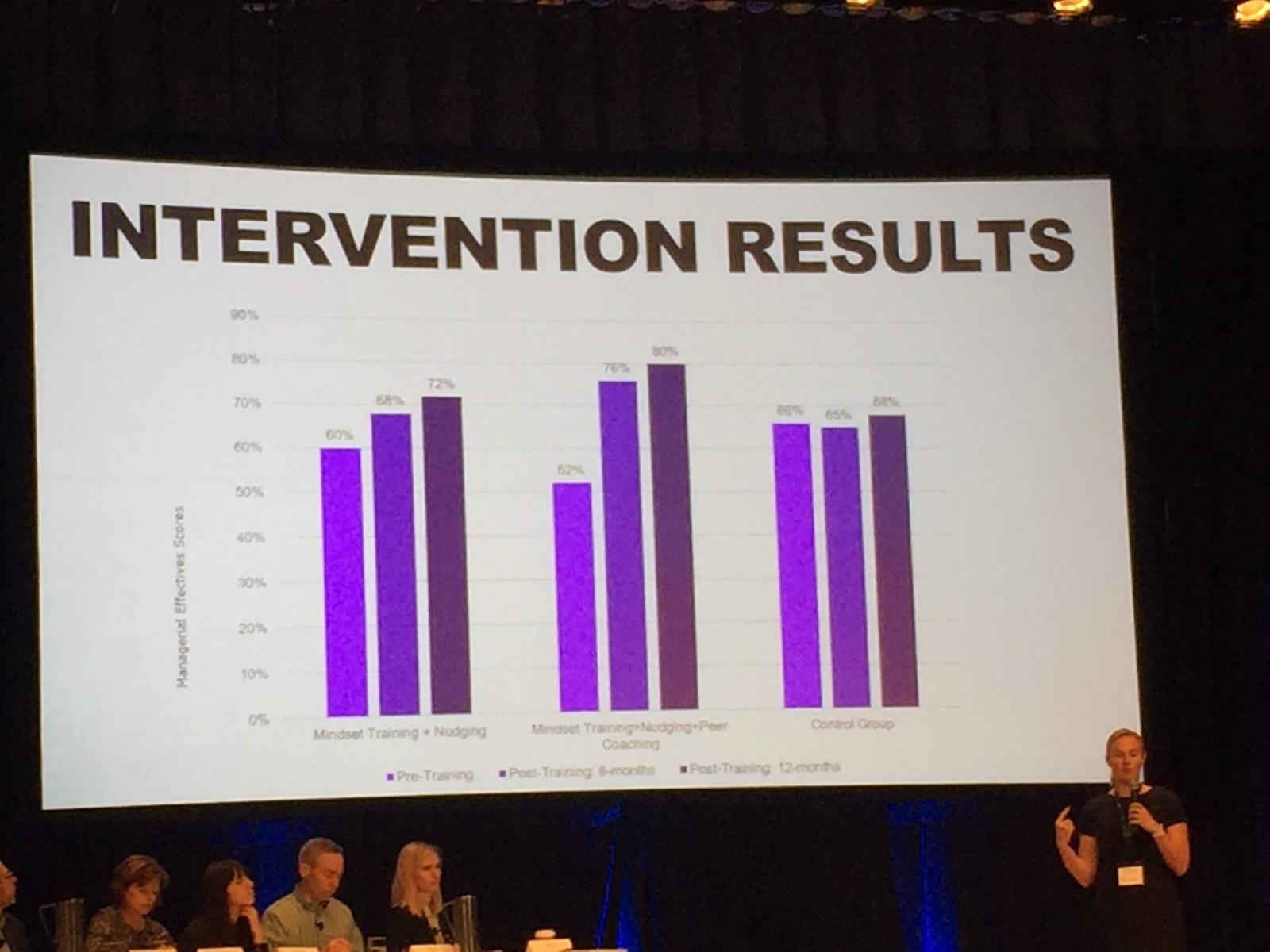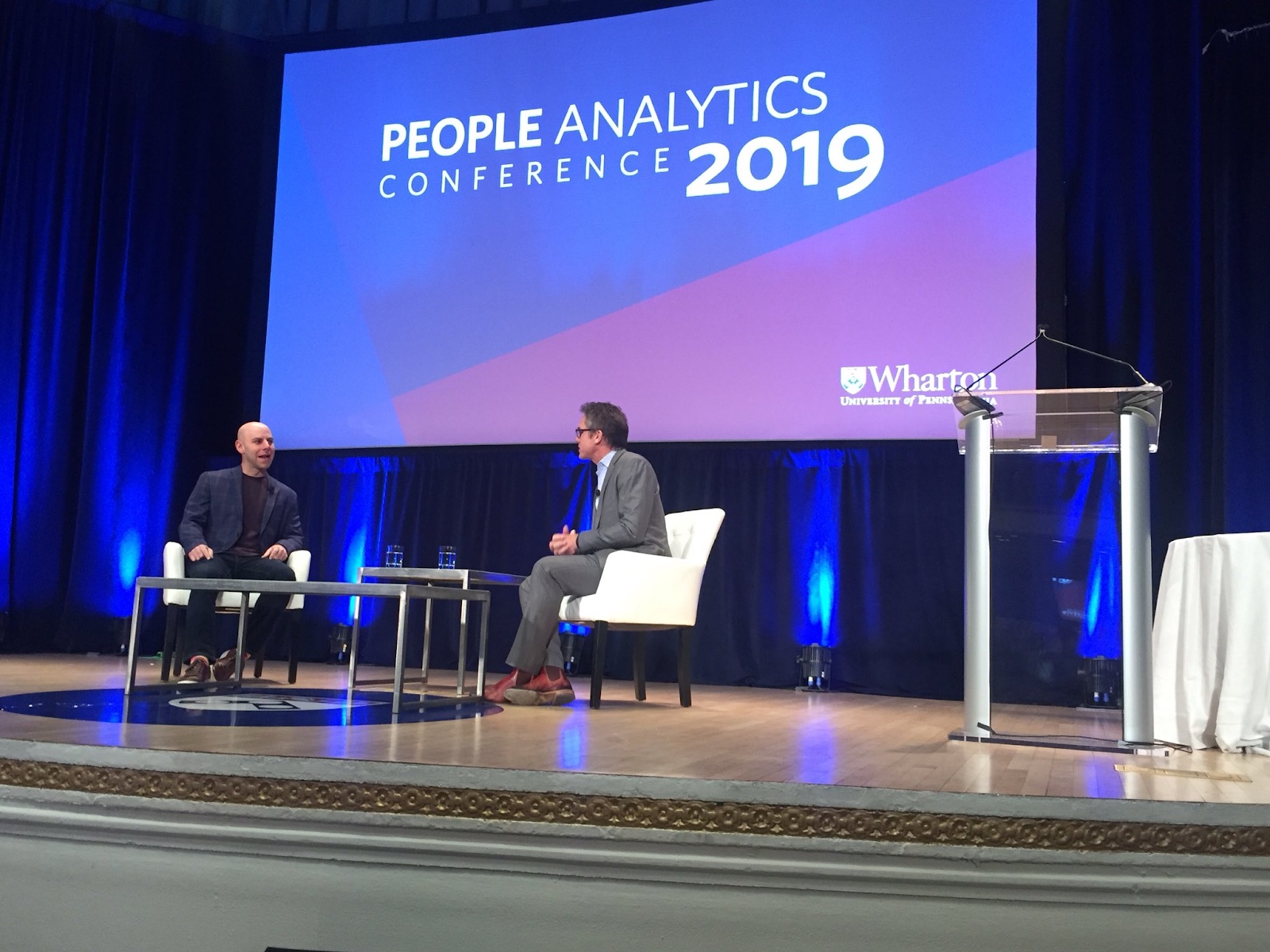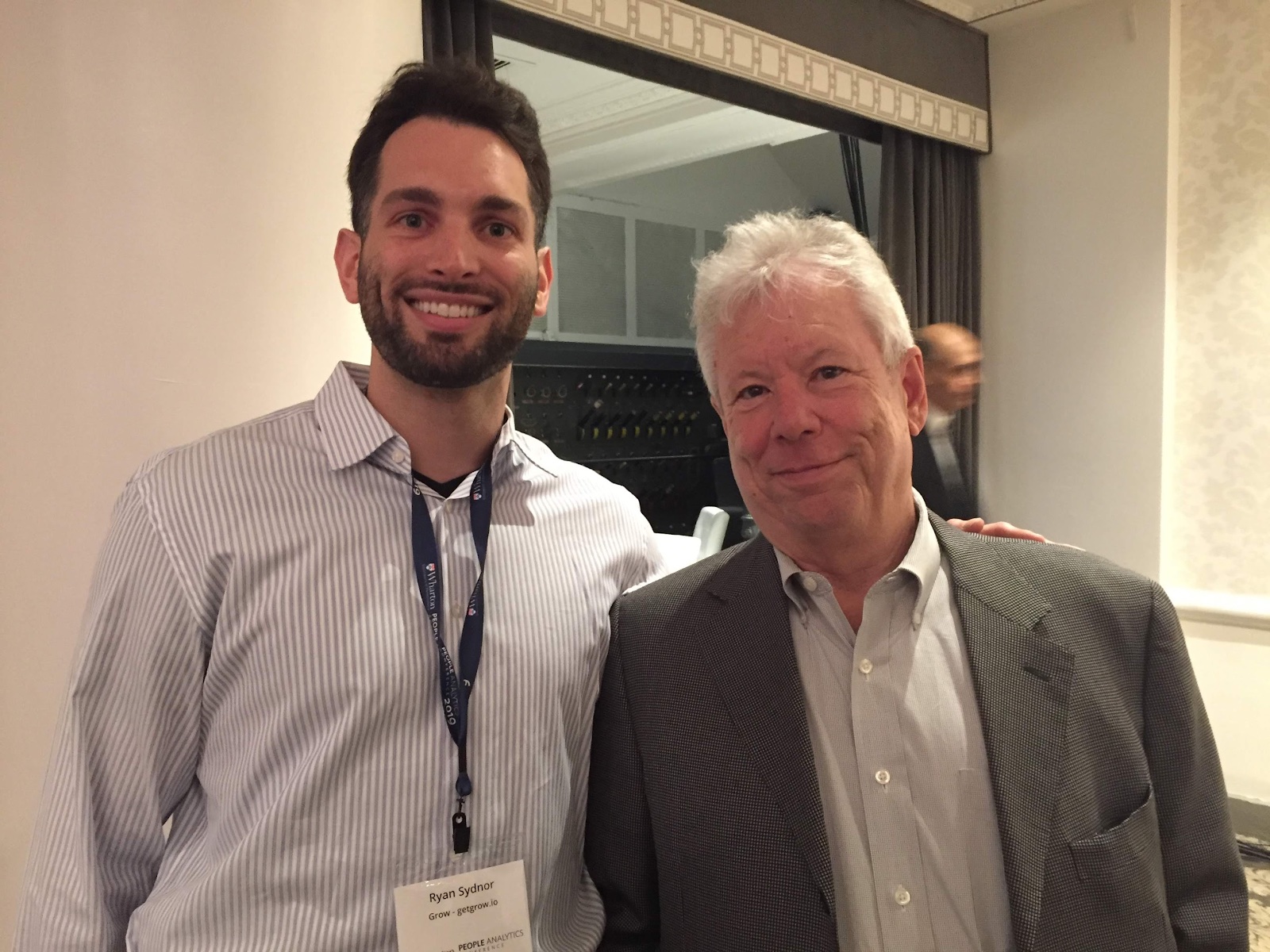Originally posted here.
We just spent two incredible days at the Wharton People Analytics Conference where we heard from gold medal athlete Allyson Felix, Nobel prize-winning economist Richard Thaler, performance expert Marcus Buckingham, organizational psychologist Adam Grant, and industry-leading human resource executives. We learned how our product, Grow, fits into the future of work by incorporating three people analytics trends: Organizational Network Analysis, individual development through team collaboration, and intelligent nudging.
Organizational Network Analysis
Organizational Network Analysis (ONA) is a way to understand networks of people by analyzing their communication activity on digital channels such as messaging platforms and collaboration tools. ONA can be used to answer important questions about how your organization behaves. For example, what team or department is most influential based on their communication activity? Plus, check out how cool the visualizations are!
 Example taken from Columbia’s Organizational Network Analysis course description.
Example taken from Columbia’s Organizational Network Analysis course description.
At Grow, we plan to use ONA to help you figure out who you might want to exchange feedback with and to help management understand informal communication activity in a way that’s more enlightening than a formal org chart.
Individual development through team collaboration
Google helped show that psychological safety is the foundation of productivity. At the conference, Accenture debuted a white paper (not yet published, but based on this research) that built on Google’s research to show that when psychological safety is used in conjunction with peer accountability and intelligent nudging, employee performance increased even more.
 Kelly Monahan showing improved results when psychological safety, nudging, and peer accountability are used together.
Kelly Monahan showing improved results when psychological safety, nudging, and peer accountability are used together.
What does peer accountability look like? It often comes in the form of feedback. Marcus Buckingham spoke about the feedback fallacy which argues there are major issues with the way feedback is given today. Here are three of his recommendations for fixing feedback: Don’t remediate weaknesses but instead focus on improving strengths. Help people find and thrive in their zone of genius. Don’t evaluate but instead simply share your impression. The only thing each individual can be 100% certain about the validity of is their own impressions and feelings.
Don’t share what they should do differently, but rather what you would have done differently. This makes sure that feedback is actionable but not imposing.
 Photo Credit: @WhartonPAC Twitter
Photo Credit: @WhartonPAC Twitter
At Grow, we help you become more self-aware about your strengths by harnessing the wisdom of your team through continuous feedback. We then help you build and fortify your strengths by combining feedforward with personalized micro and macro educational resource recommendations — right in the flow of work!
Intelligent nudging
Richard Thaler has proven that the power of nudging is indisputable. To help people better plan for retirement, he simply defaulted them into a savings program. Modifying the choice architecture led to billions of dollars of retirement savings that otherwise would not have happened. Why did this have such a dramatic effect? Because it was easy. In BJ Fogg’s model of behavior change, the easier and more simplistic a behavior is, the higher the likelihood that someone will do it. By making saving the default choice, it took more effort to not save. However, Thaler warned the audience that becoming a choice architect comes with a moral and ethical responsibility — don’t nudge someone unless you are 100% sure it is the right direction for them and ensure that you can measure the results of your nudge!
 Ryan Sydnor and Richard Thaler
Ryan Sydnor and Richard Thaler
At Grow, our nudges encourage people to exchange continuous, lightweight feedback with one another to help teams build a culture of trust. We recently submitted a paper to the Association For Computing Machinery’s Collaborative and Social Computing conference detailing the successes of our nudging experiments. Thank you to everyone at Wharton who helped organize the people analytics conference, and thank you to all the speakers. The community was warm and welcoming. Follow us on LinkedIn and Medium to see how we’re continuing to push the frontier of people analytics.